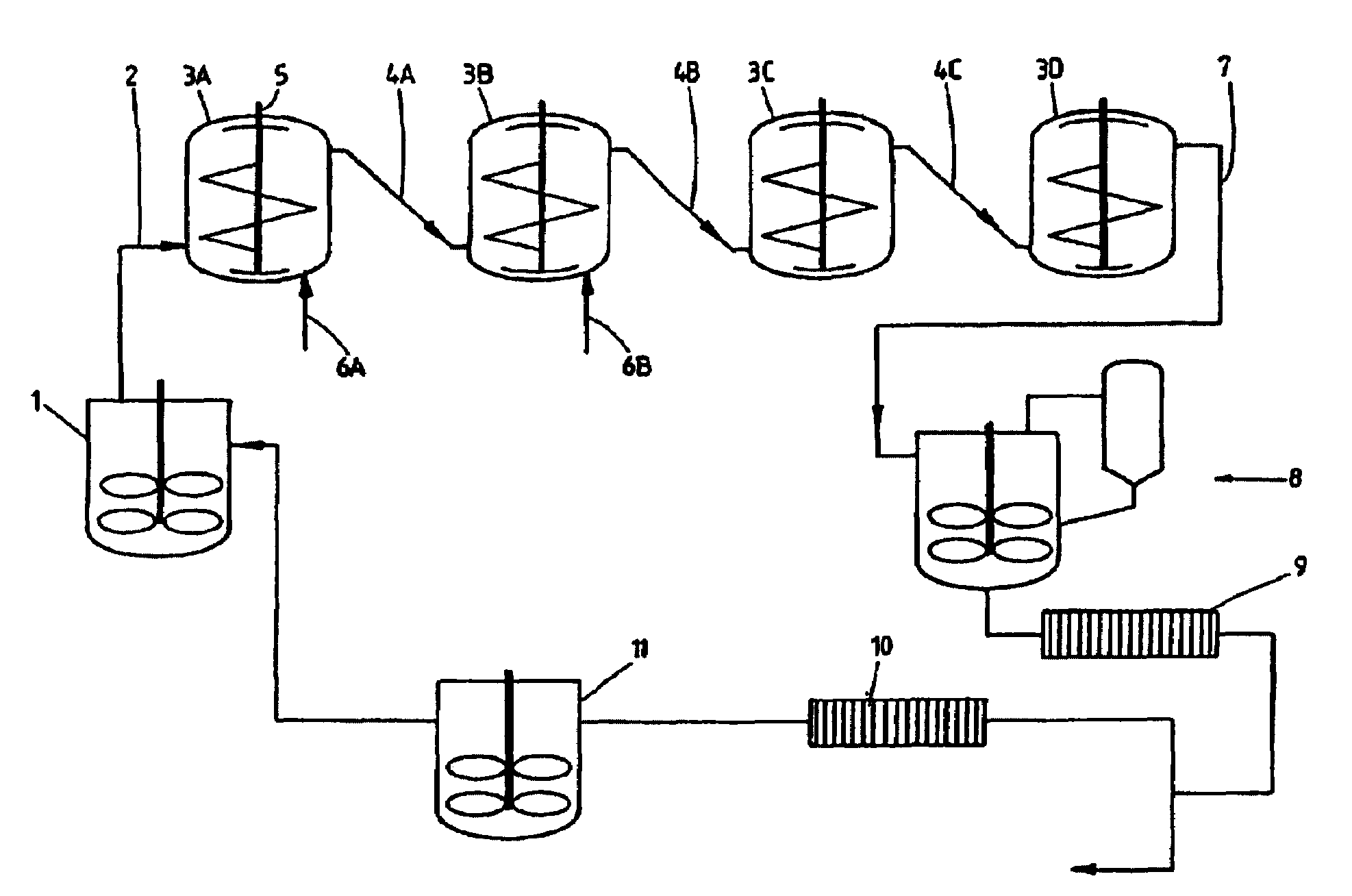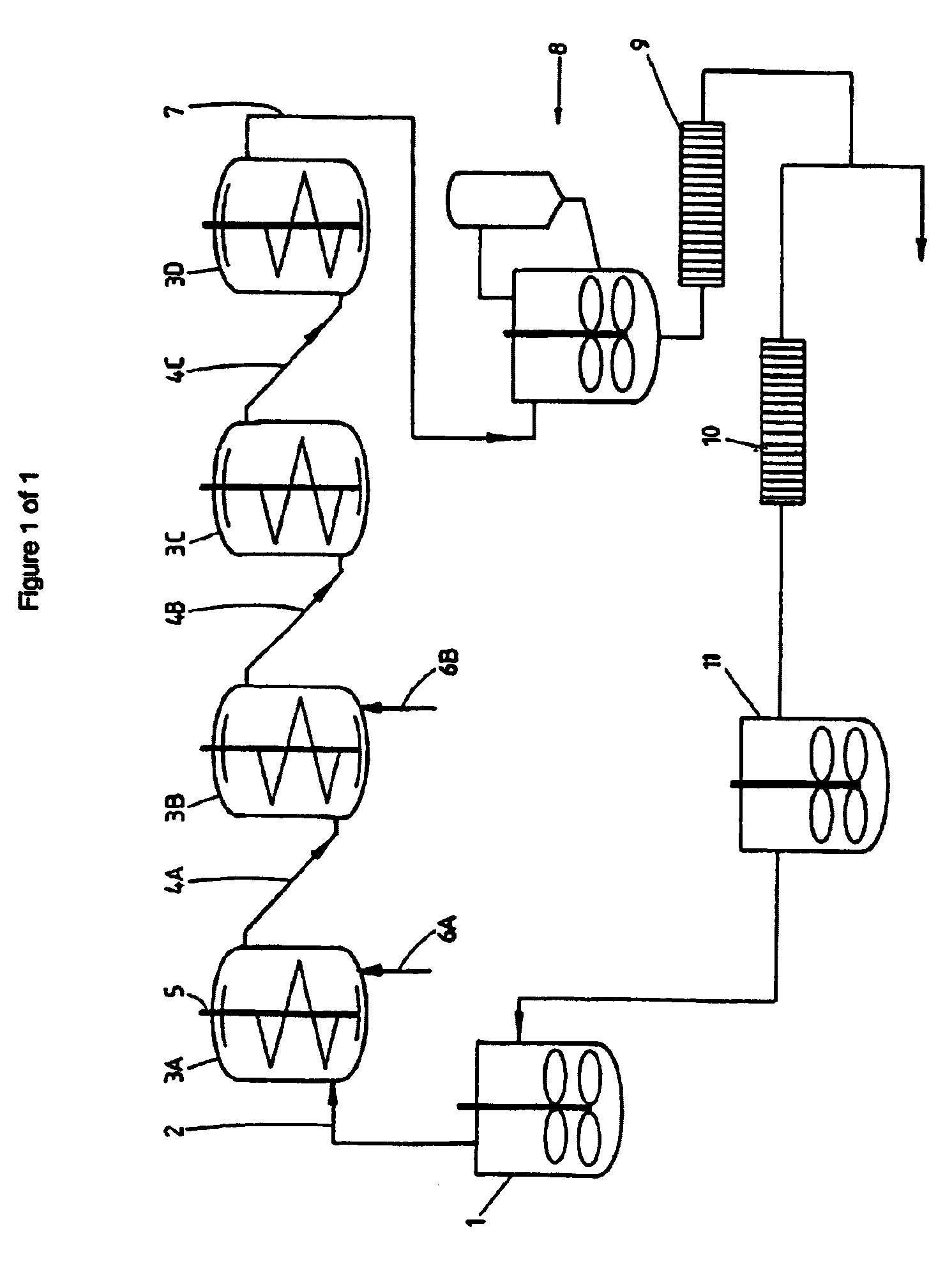Preparation of iron compounds by hydrothermal conversion
- Summary
- Abstract
- Description
- Claims
- Application Information
AI Technical Summary
Benefits of technology
Problems solved by technology
Method used
Image
Examples
example 1
[0049]Iron hydroxide (prepared by precipitation of iron nitrate with NaOH) was suspended in water. The suspension had an SLR of 0.06 and a solids content of 6 wt %. This suspension was pumped continuously upward through one conversion vessel (3A) at a temperature of 190° C. (using steam injection) and autogeneous pressure. The suspension was vigorously agitated using a double-helix impeller at 76–83 rpm. The throughput was 0.3 l / min.
[0050]The suspension leaving the conversion vessel had an SLR of 0.05 and a solids content of 5 wt %. The color of the suspension had changed from brown at the start of the reaction to bright orange-red at the end.
[0051]The product iron compound was isolated by filtration and dried at 80° C. for further analysis. XRD and chemical analysis on the orange-red powder revealed the quantitative formation of iron oxide, i.e. hematite.
example 2
[0052]The iron ore goethite (and iron oxyhydroxide) with a BET surface area of 94 m2 / g was suspended in water. The suspension had an SLR of 0.11 and a solids content of 10 wt %. This suspension was pumped continuously upward through one conversion vessel (3A) at a temperature of 190° C. and autogeneous pressure. The suspension was vigorously agitated using double-helix impeller at 76–83 rpm. The throughput was 0.3 l / min.
[0053]The suspension leaving the conversion vessel had an SLR of 0.11 and a solids content of 10 wt %.
[0054]The product iron compound was isolated by filtration and dried at 80° C. for further analysis. XRD and nitrogen adsorption-desorption measurements performed on the powder demonstrated a structural change: the porosity had decreased, while the crystallinity had increased. The BET surface area of the product material was 26 m2 / g.
example 3
[0055]The product iron compound of Example 2 was calcined at 350° C. for 5 hours with a ramp of 10° C. / min. A porous hematite was obtained.
PUM
| Property | Measurement | Unit |
|---|---|---|
| Temperature | aaaaa | aaaaa |
| Percent by mass | aaaaa | aaaaa |
| Percent by mass | aaaaa | aaaaa |
Abstract
Description
Claims
Application Information
 Login to View More
Login to View More - R&D
- Intellectual Property
- Life Sciences
- Materials
- Tech Scout
- Unparalleled Data Quality
- Higher Quality Content
- 60% Fewer Hallucinations
Browse by: Latest US Patents, China's latest patents, Technical Efficacy Thesaurus, Application Domain, Technology Topic, Popular Technical Reports.
© 2025 PatSnap. All rights reserved.Legal|Privacy policy|Modern Slavery Act Transparency Statement|Sitemap|About US| Contact US: help@patsnap.com


